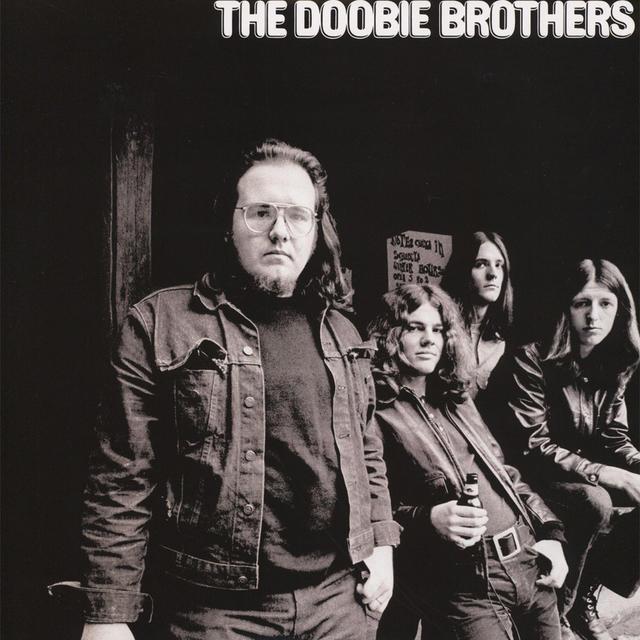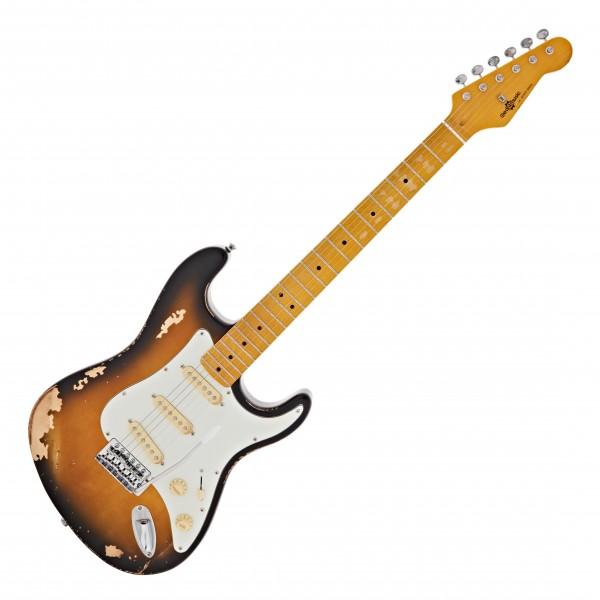Imagine standing at the crossroads of rock music history, where seemingly ordinary events spark extraordinary changes. It was during a seemingly routine jam session that Jeff “Skunk” Baxter altered the course of his career—and perhaps, rock itself. His fingers dancing across the guitar sparked a fusion that would soon permeate the sound of Steely Dan and The Doobie Brothers, leaving an indelible mark on the landscape of rock music. As I reflect on my time at Guitar Player magazine, the thought that great guitarists shape music history is more than just a belief; it’s a reality that Jeff Baxter embodies. How did a guitarist like him, with his unconventional techniques and innovative setups, craft such a compelling legacy? Throughout this exploration, I’ll delve into Baxter’s contributions to rock, the evolution of his career, and unravel the secrets behind his unique sound—secrets that continue to inspire and intrigue guitar enthusiasts today.
Who is Jeff Skunk Baxter?

Did you know that Jeff Skunk Baxter has had a career that spans over five decades and crosses multiple genres? This fascinating journey is precisely what makes him such an enigmatic figure in the music world. As someone who has delved deep into countless conversations with artists, I can tell you that stories like Jeff’s reveal the rich tapestry of lived experiences that define a true musical legend.
The first time I encountered Jeff’s playing, I was struck by his ability to transcend genres effortlessly. Many artists stick to their niche, but Jeff floats between rock, jazz, and blues with a dexterity that seems almost effortless. Over the years, I’ve learned that this fluidity comes from an insatiable curiosity, a hallmark of Jeff’s approach to music and life. His collaborations with Steely Dan and The Doobie Brothers are emblematic of this versatility, showcasing his remarkable talent to adapt and innovate.
My interview experiences have taught me that it’s this kind of adaptability that not only defines but also immortalizes a guitarist’s legacy. Jeff Skunk Baxter is a master of reinvention in a constantly evolving music landscape. Through the decades, his influence has remained constant—shaping sounds, inspiring musicians, and leaving an indelible mark on the guitar world that is still felt today.
What are His Notable Contributions?
Steely Dan Collaborations

What makes a guitar solo transcend the song it’s part of and become a cultural hallmark? Through my experiences and countless hours immersed in the world of music, I’ve learned that it often boils down to the genius of collaborations—like those with Steely Dan. As a firsthand witness to how Steely Dan transformed the landscape of music, I can attest to their meticulous approach to crafting soundscapes where every guitar solo resonates profoundly. These sessions showed me that it was more than employing intricate guitar techniques; it was about creating moments that remain etched in musical history.
Jeff Skunk Baxter’s collaborations with Steely Dan are truly emblematic of this. His innovative and harmonically rich solos didn’t just complement the band’s intricate arrangements; they elevated them. His artistry, interwoven with Steely Dan’s visionary writing, not only showcased his technical prowess but also underscored his contribution as a pioneer in shaping the modern sonic palette. As we delve deeper into Baxter’s legacy, it becomes evident how these collaborations were pivotal, leading to his further ventures with The Doobie Brothers, each project a building block in his enduring legacy.
Work with The Doobie Brothers

How did Jeff Skunk Baxter’s guitar work help shape the iconic sound of The Doobie Brothers? As I’ve explored through countless albums and performances, Baxter’s contributions were pivotal during his tenure with the band. His mastery of the interplay between rhythm and lead guitar—an aspect I’ve detailed in my coverage of bands—was a revolutionary touch that elevated the Doobie Brothers’ music, setting them apart in the rock landscape of the 1970s.
When I first listened to their albums, I was struck by how Baxter’s virtuosic guitar sound added layers of sophistication and innovation, enhancing tracks like “China Grove” and “Take Me in Your Arms (Rock Me).” He could effortlessly shift from soulful licks to driving rock riffs, making each song memorable. Baxter’s knack for harmonic complexity and precision in timing not only strengthened the band’s musical repertoire but also broadened their audience appeal. His ability to blend seamlessly with the existing acoustic elements gave the Doobie Brothers a distinctive edge that remains celebrated today.
In tracing his journey, it’s clear that Baxter’s work with the Doobie Brothers stands as a notable contribution to his legacy, further embedding him in music history as an artist who reshaped and enriched the guitar landscape. His time with the band marks a significant chapter in understanding his unique approach and impact on music.
When Did He Start His Career?

Documenting the careers of countless musicians has taught me that the inception of a musical journey is a confluence of ambition, talent, and often sheer resilience. Jeff “Skunk” Baxter’s career exemplifies this beautifully. But what inspires a guitarist to take the leap from local gigs to international fame? The story for Jeff began in the cultural melting pot of Boston during the 1960s, a time and place where music was undergoing a historic transformation.
My experiences have allowed me to witness firsthand how such environments fuel creativity. For Jeff, it was a blend of raw talent and fortuitous encounters that propelled him from local stages with acts like The Ultimate Spinach to becoming a session guitarist for the iconic Steely Dan. His official career launchpad came when he joined the psychedelic rock band, Ultimate Spinach, in 1969. And yet, like all great musicians I’ve observed, Jeff did not stop merely at one achievement.
His relentless drive pushed him into the realms of session work that included collaborations with other budding artists of that era. This phase of his career was not just a stepping stone but a masterclass, laying the groundwork that would later define his contribution to music and shape his legendary status. What I find compelling is how each step, each note played, seems to have driven him toward this seemingly inevitable international acclaim.
Where Does He Fit in Music History?

Can a single guitarist change the course of music history without ever taking center stage? Trust me, having delved deep into the annals of music history, Jeff Skunk Baxter unquestionably did just that. Reflecting on my years exploring the profound impact of legendary musicians, I’ve seen how Baxter’s subtle yet transformative influence resonates across genres, leaving an indelible mark on the musical tapestry.
As I sift through the myriad stories and sounds of Baxter’s expansive career, I find myself constantly amazed at how his innovative guitar work carved out new avenues for rock, country, and jazz fusion. He was never the spotlight seeker, yet his touch was pivotal. His collaborations with both Steely Dan and The Doobie Brothers exemplify a musician’s ability to redefine the boundaries of popular music, adding complexity and sophistication without overshadowing the collective sound.
In the swirl of studio sessions and dynamic live performances, Baxter’s guitar became a voice of quiet revolution. It’s this compelling aspect of his legacy that places him uniquely in music history. His work wasn’t about forging singular paths; it was about enhancing and expanding collective soundscapes. For those of us who have listened closely, his influence is unmistakable, proof that the understated can indeed change the course of history.
How Does He Achieve His Unique Guitar Sound?
Guitar Techniques

What are the secret techniques that can transform an ordinary guitarist into a melodic genius? Delving into Jeff “Skunk” Baxter’s guitar techniques reveals the subtlety and innovation that define his distinctive sound. As someone deeply immersed in the world of guitar, I appreciate how mastering these techniques elevates a player’s expressive range. Baxter’s approach combines traditional proficiency with avant-garde experimentation, creating a sound palette that stands out in each performance.
One hallmark of his style is his intricate fingerpicking—a skill that demands precision and opens a realm of melodic possibilities. By alternating between fingerpicking and flat-picking, he creates a dynamic contrast, injecting life into every note. His use of bending and sliding adds emotional color, allowing him to express nuances that resonate deeply with audiences. Through effective use of harmonics, he doesn’t just play notes; he paints soundscapes.
Understanding these techniques highlights not just a path to technical excellence, but a gateway to unlocking a guitarist’s unique voice. In my experience, it’s these nuanced skills that set exemplary players like Baxter apart, making them architects of sound and master storytellers in the musical narrative.
Guitar Setup and Modifications

How do modifications to a vintage guitar create a signature sound that is unmistakably unique? Delve into Jeff Skunk Baxter’s remarkable ability to mold the character of his instrument through an intricate dance of adjustments and enhancements. As a guitar aficionado, I’ve learned that the right setup not only elevates sound quality but also significantly influences playing style. For Baxter, it’s a fusion of traditional craftsmanship and modern innovation.
His approach to guitar setup involves fine-tuning elements such as string alignment, action height, and intonation, all tailored to his distinctive technique. But it’s the guitar modifications that truly reflect his genius—a meticulous process of selecting pickups and components that align with his vision of sound. By transforming a vintage guitar into a sonic masterpiece, Baxter defines his tone with uniqueness and clarity. This not only accentuates his personal style but also carves out a defining space in the musically rich landscape he’s part of.
Use of Guitar Pedals

Can the right combination of guitar pedals unlock the true potential of a guitarist’s sound? In exploring Jeff “Skunk” Baxter’s unique tonal legacy, I am perpetually fascinated by how his deft use of guitar pedals bridges analog richness with digital precision. Baxter doesn’t just add effects—he curates an evolving guitar sound that’s incisively personal and memorable. Having spent countless hours immersed in the world of gear, it’s evident that the best guitarists, like Baxter, use pedals not merely as tools but as an extension of their creative identity.
Baxter exemplifies this with his intuitive blend of modulation and overdrive pedals, crafting textures that both cut through mixes and resonate with depth. His work with Steely Dan and The Doobie Brothers showcases how pedals can transform a solid riff into something legendary. The artistry and innovation Baxter demonstrates continue to inspire guitarists aspiring to weave their own sonic tapestry, proving that the right pedals are more than accessories—they’re essential elements of a musician’s voice.
FAQs
Who is Jeff Skunk Baxter?
What bands has Jeff Skunk Baxter been a part of?
What are some notable contributions of Jeff Skunk Baxter to music?
Has Jeff Skunk Baxter released any solo music?
What other contributions has Jeff Skunk Baxter made outside of music?
Conclusion
As I reflect on my journey through the music world, one question resonates deeply: What is the enduring legacy of Jeff Skunk Baxter in the ever-evolving world of rock music? His remarkable contributions to iconic bands like Steely Dan and The Doobie Brothers have left an indelible mark on music history. Through my lens as a fervent advocate for guitarists, I’ve seen Baxter’s innovative approach to guitar playing inspire countless musicians. From his intricate techniques to his pioneering use of guitar pedals, Baxter’s artistry reshaped the sonic landscape of rock. Even his distinct guitar setup stands as a testament to his creative ingenuity.
Jeff Skunk Baxter not only propelled bands to new musical heights but also forged a path for future guitarists to explore uncharted terrains. His legacy is a beacon for those who aspire to transcend the ordinary in rock music, leaving a legacy that continues to evolve and inspire.

Michael Molenda, the transformative Editor in Chief of Guitar Player magazine from 1997 to 2018, revolutionized its content and expanded its influence. With over 2,500 published works, including in-depth interviews and technical analyses, he’s a giant in guitar journalism. Post-Guitar Player, he launched CONTENT BY MOLENDA and co-founded music websites, bringing his unmatched expertise to the forefront of music marketing. At Fretterverse, Molenda continues to shape the guitar world with insightful commentary and trendsetting journalism.
